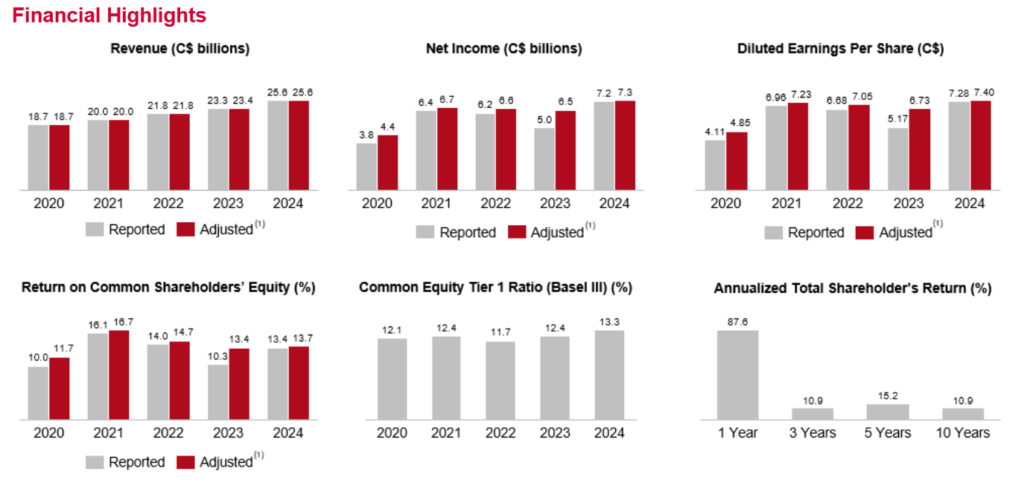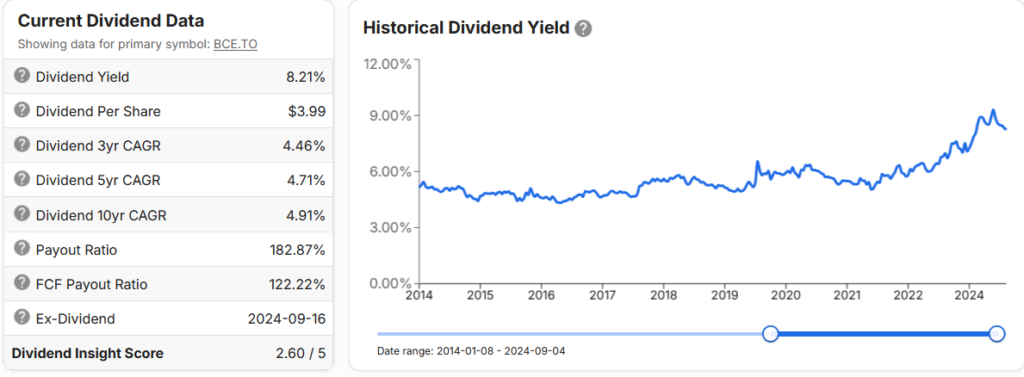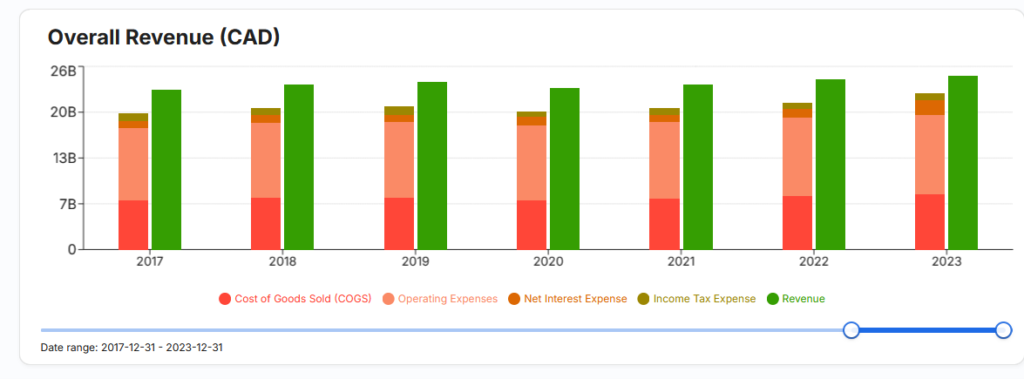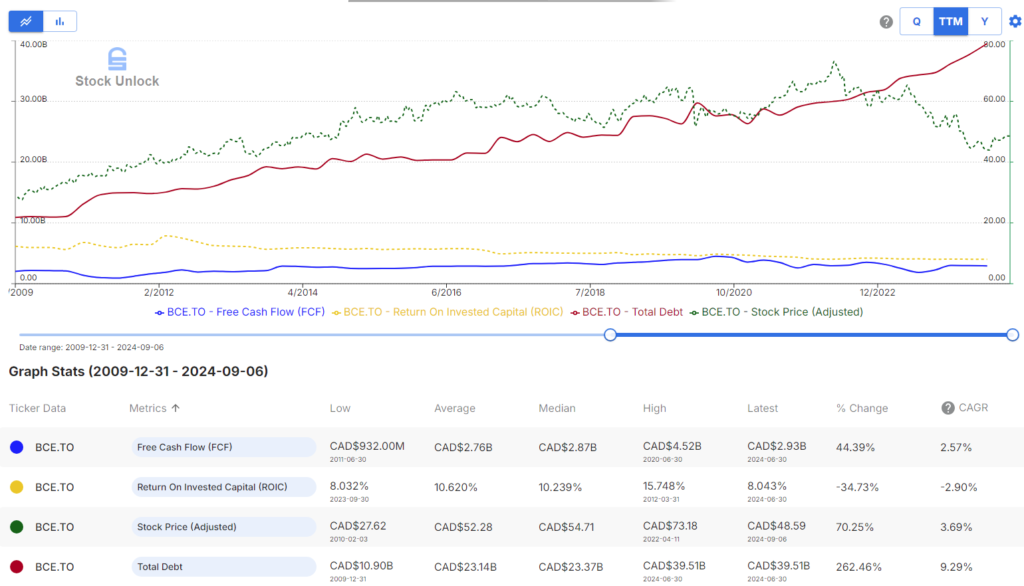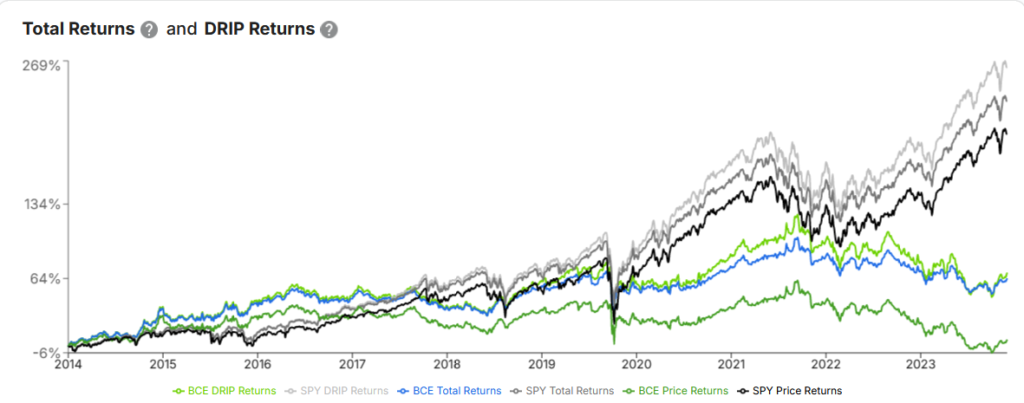Overview
As a journal for my thoughts and actions on investing, I’ve decided to record quarterly investment activities that don’t merit separate posts. I plan to write these reviews semi-annually, which aligns with my philosophy that investment actions, including updates, should be driven by necessity rather than calendar obligations.
Given that it is a new year, I also comment on portfolio performance in 2024.
Q4 2024 Portfolio Activity
Getting My Tech Off – Strategic Portfolio Exits in ENGH and OTEX
Two significant positions were closed during the quarter as part of my evolving investment strategy. Enghouse Systems (ENGH) and Open Text Corporation (OTEX) were divested, with proceeds redeployed to strengthen existing positions in Brookfield Corporation (BN), Brookfield Asset Management (BAM), and Toromont Industries (TIH).
Enghouse Systems, despite its strong financial metrics including high return on invested capital and debt-free balance sheet, faced increasing competitive pressures in its contact center business from behemoth Microsoft (MSFT). While the company has successfully transitioned toward software-as-a-service revenue models, its growth remains heavily dependent on acquisitions. The emerging threat from artificial intelligence in the contact center space, combined with significant key person risk in founder-CEO Sadler, led to my exit decision.
The Open Text position, initiated during a period of dividend-focused investing, no longer aligned with my current investment criteria emphasizing deep business understanding and sustainable competitive advantages. Frankly, I didn’t even pay attention to the company beyond a cursory examination of cash flow and dividends.
This is a practical lesson in being confident in one’s own process, or to invert that: to not blindly follow others. Of course it is fine to adjust what we do, and how we do it over time. Indeed, one should; the world is not static and we learn from experience. Chasing what others are doing because one doesn’t know what their approach is, however, is not a good recipe. Much like sailing without a rudder, one is subject to the vagaries of the blowing wind.
Healthcare Sector Repositioning
A strategic rotation within healthcare saw me exit Johnson & Johnson (JNJ), held since 2015, in favor of Thermo Fisher Scientific (TMO). While the long-term thesis on healthcare demand growth remains intact, TMO offers superior exposure to this trend through its “picks and shovels” business model, serving both healthcare and adjacent markets. This decision followed extensive analysis of TMO’s market position and growth prospects, which will be detailed in a forthcoming post.
Performance Review
Whilst acknowledging the limitations of calendar-year performance measurement, the portfolio generated the following returns in 2024:
Unregistered Accounts: 12% to 24%
Registered Accounts: 19% to 36% (with one account at 2% due to underperforming REIT exposure)
These results compare favorably to major indices:
- Toronto Stock Exchange (TSX): 18%
- NASDAQ: 29%
- S&P 500: 23%
- Dow Jones Industrial Average (DJIA): 13%
Given that I have a mix of stocks across all these, few tech stocks, a broad comparison feels relevant. Performance is particularly noteworthy given limited exposure to technology stocks and complete absence of the “Magnificent Seven” companies that drove significant index returns.
Investment Philosophy Evolution
My investment approach has evolved meaningfully from its dividend-focused origins. This evolution began after studying various dividend-focused strategies, including those emphasizing tax-advantaged eligible dividends in Canada. While such approaches can and have indeed succeeded, I’ve concluded that they might sacrifice substantial capital appreciation potential and create unnecessary complexity through over-diversification. This reflection led to a significant refinement of my investment approach.
My current strategy targets a 9% compound annual growth rate, focusing on high-quality businesses I can hold for extended periods. This target would double invested capital every eight years. Dividend income, while welcome, is no longer my primary consideration.
Thus, having moving away from both pure dividend targeting and “cigar butt” value investing, I am instead emphasizing:
- Companies with sustainable competitive advantages
- Businesses I deeply understand
- Opportunities for long-term value creation
- Management teams with strong capital allocation skills
Looking Forward
The portfolio’s strong performance in 2024 seems to validate my refined investment approach, but I recognize it is only a single year. More importantly, a clearer investment philosophy and improved analytical framework should better position me for future opportunities. I think I’ll maintain semi-annual communication cadence, supplemented by specific investment analyses when warranted.
Good luck to all and enjoy the ride!


